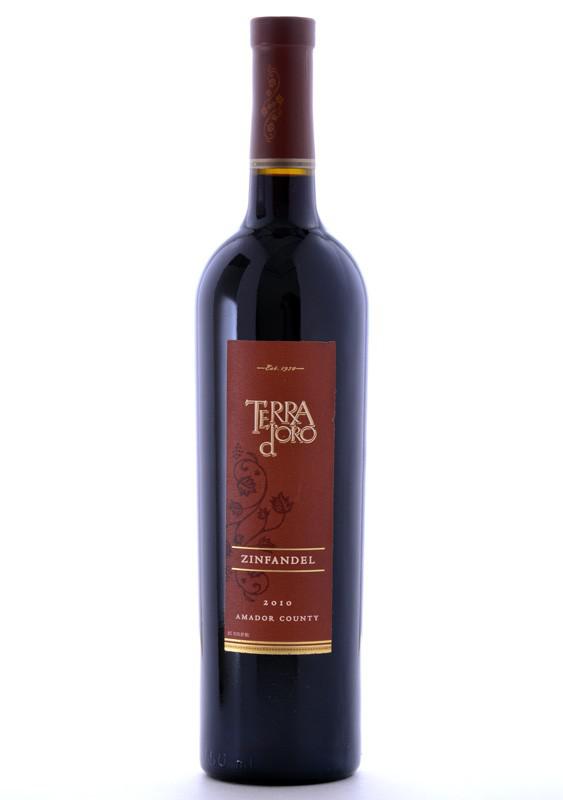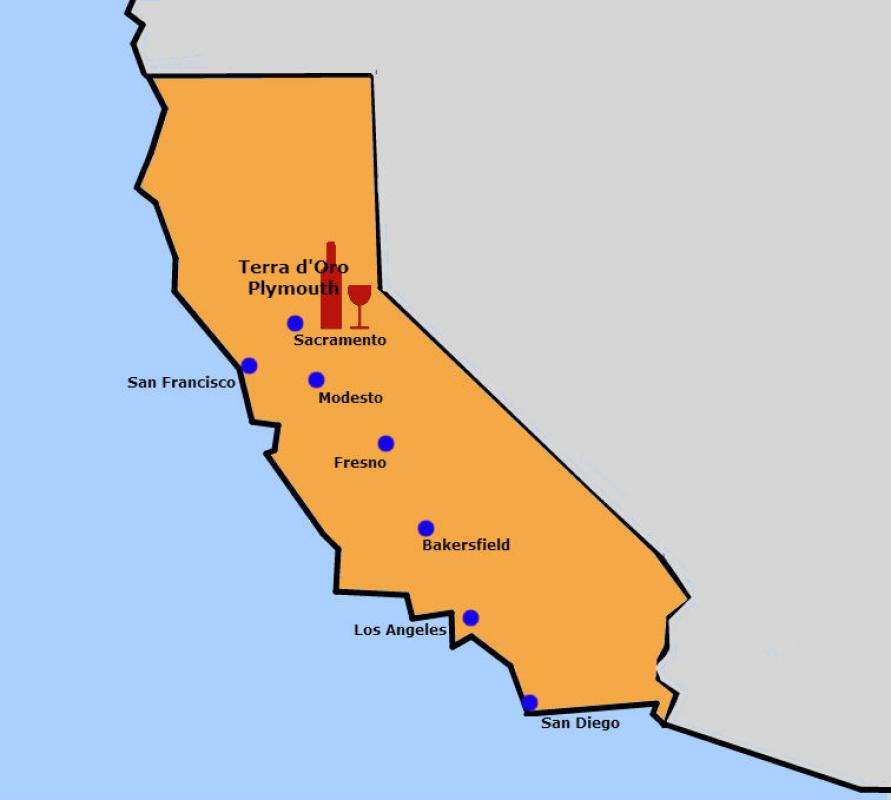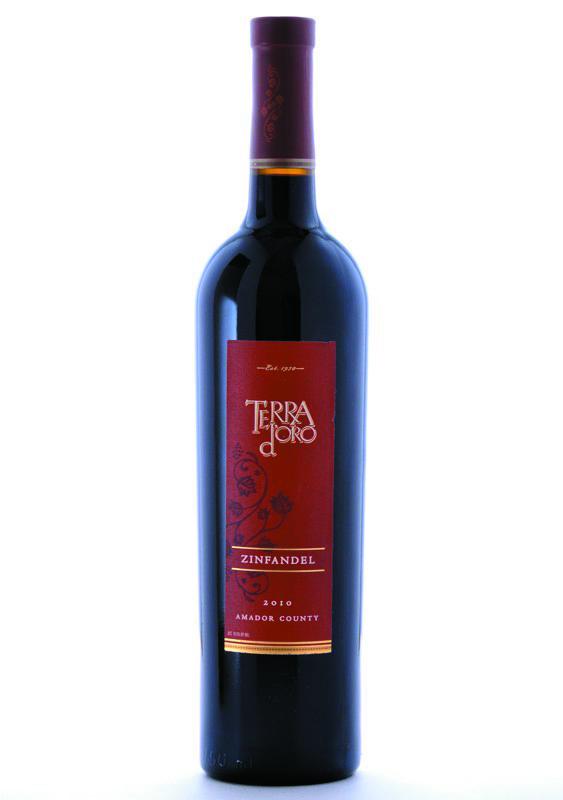Terra d’Oro Zinfandel
Amador County, Calif.
$9.99 to $15.99
In the early 1970s in Atlanta, you could be considered knowledgeable about wine if you knew that the rose from Lancers and Mateus came from Portugal.
And there were ego-boosting bonus points given if you could name any grape varietal, that is, other than the muscadine or scuppernong that grew wild in the backyard and made really skunky wine.
During a special evening at a fancy downtown restaurant, I had been trying to impress my date by ordering wine with dinner. I studied the wine list, a tome the size of the big-print Oxford Dictionary with hundreds of wines. I didn’t have a clue what to order or even whether we wanted white or red. I was thinking, perhaps, of my fall back, ordering Mateus, when the kindly waiter saved the day.
“Might I suggest a zinfandel. We have a very nice one,” he said, recognizing my plight and probably guessing that we weren’t legally old enough to be drinking.
At that moment, zinfandel became my all-time favorite red wine. Of course, it was the only red wine I’d ever had. It was amazing, wonderfully lush and fruity, just the right thing for the food we were having, and well suited to a 19-year-old’s palate.
That evening also was my introduction to California wines, which were just starting to get global recognition and to compete with the great wines of France for quality.
After that, I learned a lot about zinfandel by reading William E. Massee’s 1970 book Wine of America: An Introduction to the New World of Wines.
Massee noted that zinfandel wasn’t worth drinking unless it came from the northern part of the state, and fortunately, we had had a bottle from one of the best producers cited by the author, Buena Vista.
The origin of zinfandel grapes was a bit of a mystery, Massee said, noting that vines had probably been brought to California by Italian immigrants who came to the state during the gold rush of the 1850s. Even the name was fuzzy, he said.
Massee was writing before scientists developed DNA grape IDs. Recent testing has traced zinfandel back to Croatia, and its eventual spread to southern Italy, where it also is called Primitivo.
According to the 2012 book Wine Grapes by Jancis Robinson and Julia Harding, DNA testing of vines from vineyards across the globe led researchers to a single 90-year-old grape vine from the garden of an elderly woman in Split, Croatia, which provided the evidence to show that zinfandel was a Croatian grape that has been known as “tribidrag” since at least the 15th century.
The name was believed to be a derivation of a German word, and by the time it got to California, it had become zinfandel. And the grape apparently arrived in California in the wagons of Northeastern nurserymen who joined the gold rush and who had been growing the vines in hothouses back home. After the gold petered out, zinfandel and winemaking became the moneymakers, at least until the Prohibitionists killed the industry.
I recently discovered Terra d’Oro zinfandel almost by accident. It was on sale. The grapes are grown, and the wine produced, in the Shenandoah Valley in Amador County, about 45 miles southeast of Sacramento and a two-hour drive from San Francisco in the Sierra Nevada Mountains. The summer days are warm and the nights cool, excellent conditions for producing zinfandel.
Amador, which was the epicenter of the mother lode in the state’s gold country, is also the state’s oldest wine producing region. Some of the small towns in the county are locked in a time capsule, throwbacks to the Old West and Bret Harte’s short story The Luck of Roaring Camp. The landscape is bucolic, dotted with grazing cows and sheep, but the wineries are modern, high-tech facilities that have low-key tasting rooms, some that even waive the tasting fees, a practice that would never occur in the Napa or Sonoma valleys, MaryAnn Worobiec says in a November article in Wine Spectator magazine.
Terra d’Oro, under its parent company, Montevina, was the first winery to be reopened in Amador after Prohibition, when young winemaker Cary Gott and his father-in-law, Walter Field, got it started in 1970. Terra d’Oro wines debuted in 1973.
In 1988, the Trinchero family purchased the winery and the Montevina and Terra d’Oro labels. The Trincheros, who made lots of money producing the down-market Sutter Home, along with better wines, were the developers of white zinfandel, a sweet, pinkish wine that hit the market in the 1970s when sales of the fizzy Portuguese roses were just starting to peak in the U.S. market. White zinfandel, which developed out of a winemaking mistake, sells about 4 million cases a year, about six times more than red zinfandel. And now it’s pretty hard to find a bottle of Mateus or Lancers.
Terra d’Oro is grown using sustainable farming methods. Some of the grapes used to make the wine come from 125-year-old vines and others from “Heritage root stock” cloned vines, the company’s website says.
The result, the winemaker says, “is an abundance of plum and flavors of dense, juicy blackberries with well-integrated tannins.”
The winemaker recommends that you try Terra d’Oro with barbecue, but I had it with a spicy chicken dish. It was an excellent match, and it reminded me that I’ll always be grateful to that waiter who showed empathy for my situation more than four decades ago and turned me on to what remains one of my favorite wines.
Terra d’Oro is available on both sides of the river, but the price varies widely. If you can’t find it, ask your wine merchant to order it. It’s well worth the effort. Martignetti Co.’s Carolina Wine and Spirits distributes the wine in the Pioneer Valley.•
Suggestions for wines in the $10 range are always appreciated.
Warren Johnston can be reached at warren.nelson.johnston@gmail.com.






